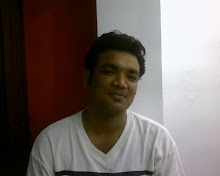Wednesday, December 17, 2008
YOUTH IN INDIA
They're capitalist-minded--and they're changing the nation forever Every day at 8 a.m., her straight black hair tied neatly in a braid, 16-year-old Neelam Aggarwal rides almost 5 kilometers to school in a horse-drawn buggy. She would like to be a doctor someday. But for girls like Neelam, who lives in the dusty, impoverished village of Farah in India's northern state of Uttar Pradesh, such a vocation seems remote. For starters, her school--like most village schools in India--doesn't even offer science classes for girls.Still, Neelam, one of eight daughters of a sweets maker, has no intention of becoming a housewife. ''I want to make something of myself,'' she says. So each day after school, Neelam operates what amounts to the village's only public telephone--a cellular phone owned by Indian cellular operator Koshika Telecom. By charging her fellow villagers to make calls, Neelam can make as much as $8.75 on a really good day. She's saving the money for computer classes, which she hopes will lead to a good job.Ten years ago, few girls in India would have dared to be like Neelam. But today, she is the very embodiment of India's youth--ambitious, technology-oriented, and confident. Her generation is the product of the incredible sociological change wrought by eight years of economic liberalization in India, a period of painful transition from one-party, socialist rule to an economy where free markets play a much bigger role. Indian society also has been transformed by the Internet and cable television--forces young people are best equipped to exploit.India's youth are already having an enormous impact: on the economy, on companies hoping to sell them products, on the media, and on the culture. Unlike previous generations, today's youth are not obsessed with the ins and outs of politics. Thus the current election, which pits the ruling Bharatiya Janata Party against the Congress Party, has failed to ignite the passions of the young. ''Today, even if Parliament blew up, no one from this generation would notice,'' says Rama Bijapurkar, a marketing consultant. ''It has little relevance for them.'' Liberalization's children also differ from their conservative, insular parents in that they proudly mix Indian values with Western packaging. They enjoy wearing saris and still admire Mahatma Gandhi. But they also like wearing blue jeans, drinking fizzy sodas, and watching MTVThis generational shift in attitudes is all the more important because this group is growing so rapidly. Some 47% of India's current 1 billion population is under the age of 20, and teenagers among them number about 160 million. Already, they wield $2.8 billion worth of discretionary income, and their families spend an additional $3.7 billion on them every year. By 2015, Indians under 20 will make up 55% of the population--and wield proportionately higher spending power.As this group, with its more materialist, more globally informed opinions, comes into its own, sociologists predict India will gradually abandon the austere ways and restricted markets that have kept it an economic backwater. These youth will demand a more cosmopolitan society that is a full-fledged member of the global economy. They will start their own businesses and contribute to a more vibrant economy. They also are likely to demand more accountability from their politicians. ''This is the generation that is reclaiming India's future,'' says Gurcharan Das, a former chief executive of Procter & Gamble Co. India and author of a forthcoming book on India in the next century. ''This is India's 'found' generation.''
Subscribe to:
Post Comments (Atom)




No comments:
Post a Comment